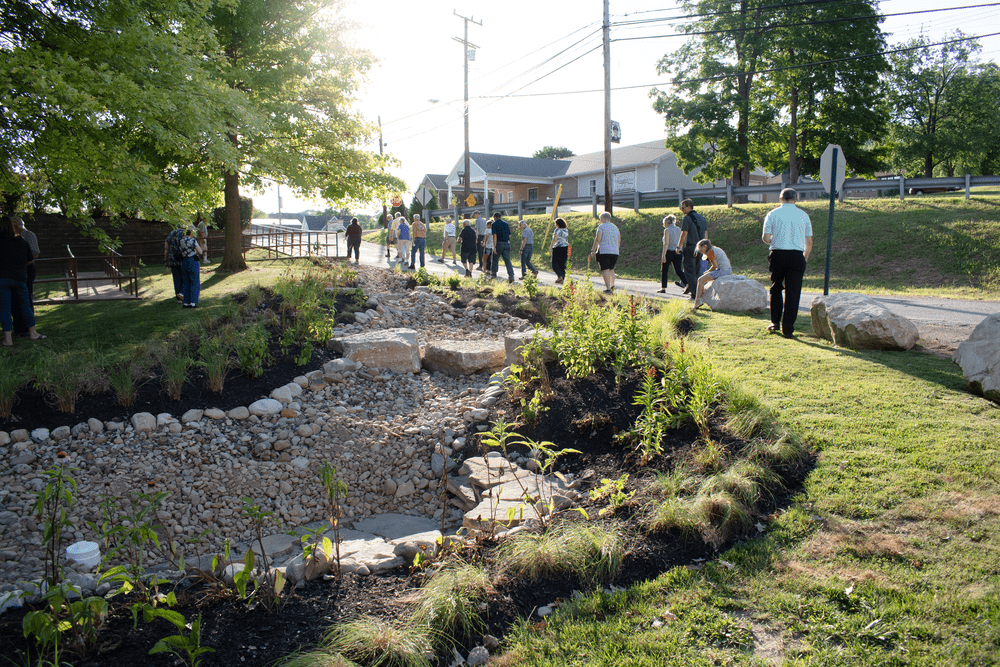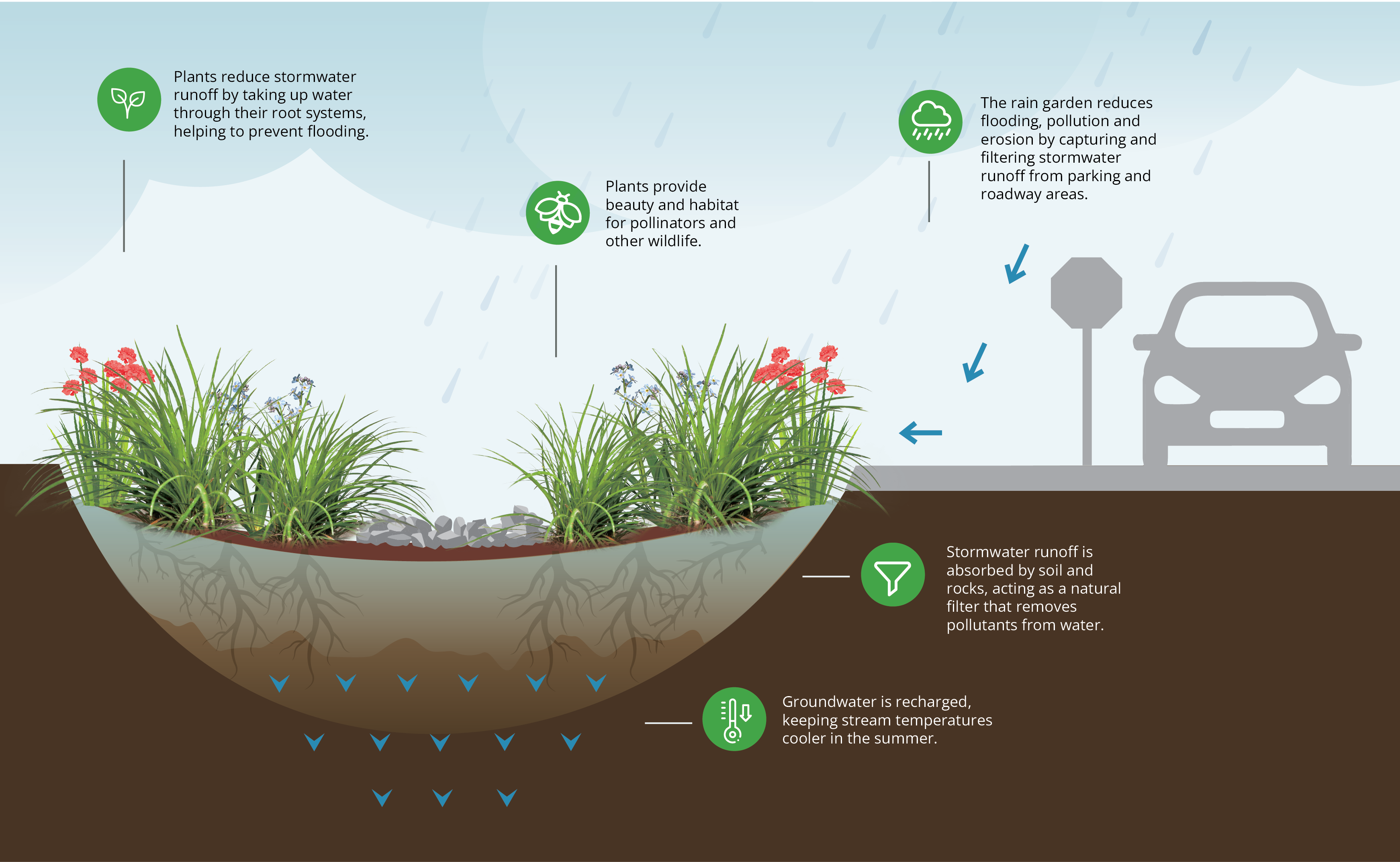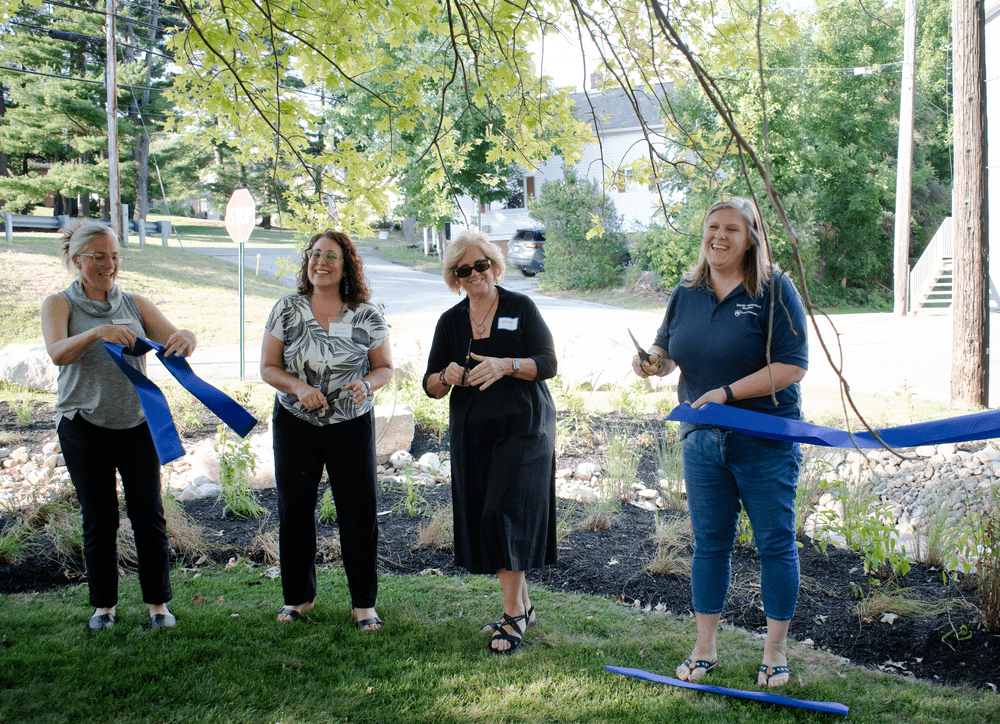Celebrating the Findlay Township Activity Center Rain Gardens
Photo: Erin Copeland (ACCD), Heather Manzo (ACCD), Janet Craig (Findlay Township) and Melissa Church (Montour Run Watershed Association) celebrate the completion of the Findlay Activity Center rain gardens at a ribbon cutting ceremony on June 25, 2024.
A Collaborative Effort for a Sustainable Future
Allegheny County Conservation District (ACCD), Findlay Township and Montour Run Watershed Association celebrated the completion of the Findlay Township Activity Center Rain Gardens. This project represents a step forward in managing stormwater, enhancing biodiversity and promoting environmental stewardship.
The rain gardens were made possible by the Growing Greener Grant from the Pennsylvania Department of Environmental Protection, with matching funds provided by Findlay Township.
This Rain Garden Manages Stormwater
These rain gardens are more than just a beautiful addition to our landscape. They serve a critical environmental function. By filtering sediment and absorbing nutrients commonly found in stormwater pollution, they play a role in preventing flooding and improving water quality in Montour Run. This nature-based solution shows the power of green infrastructure to address stormwater pollution and protect natural resources.

Benefits Beyond Stormwater Management
Rain gardens offer numerous benefits beyond stormwater management. They enhance biodiversity by providing habitats for native species, contributing to urban cooling, and improving air quality. By incorporating native plants, these gardens support local ecosystems and foster a more resilient and vibrant community.

Photo: Interpretive signage throughout the gardens highlights the positive impacts of green infrastructure, helping to raise awareness and inspire future conservation efforts.
Get to Know Montour Run Watershed
Everyone lives in a watershed, an area of land that drains to a common point, such as a stream. Montour Run Watershed encompasses approximately 37 square miles in western Allegheny County. Starting near Pittsburgh International Airport, Montour Run flows west for 13 miles before meeting the Ohio River in Coraopolis. This watershed includes six larger tributaries that contribute to its flow.
Common Pollutants in Montour Run
Several factors negatively impact the health of the Montour Run Watershed:
- Stormwater Runoff: When precipitation flows over impervious surfaces like roads and parking lots, it collects pollutants and contributes to streambank erosion and localized flooding.
- Abandoned Mine Drainage: The legacy of coal extraction has left Montour Run Watershed with mining-related impairments. Contaminants such as iron and aluminum from abandoned mines harm habitat, plants, and animals within the creek.
A Plan for Montour Run
The Montour Run Watershed Assessment and Implementation Plan strategically identifies areas to improve, protect, and preserve the watershed. It provides an analytic framework to restore water quality in impaired streams and protect water quality in streams currently meeting their designated uses.
View Plan

Get Involved
Municipalities & Watershed Partners
-
Apply for funding: Seek grants and other financial resources to support watershed projects.
-
Partner with local stakeholders: Collaborate with watershed groups, land trusts, and other local organizations.
-
Provide matching funds: Contribute financially to match grants and other funding sources.
Legislators
-
Support grant funding: Provide letters of support for grant applications to secure necessary resources.
-
Advocate for clean water legislation: Promote and support legislation and funding programs like Growing Greener and the Watershed Restoration & Protection Program.
Watershed Residents
-
Support local organizations: Get involved with local watershed groups and participate in their activities.
-
Join clean-up events: Help keep our streams and waterways clean by participating in community clean-up efforts.
-
Plant native trees and plants: Use native landscaping to support local biodiversity.
-
Maintain streamside vegetation: Avoid mowing close to streams to preserve natural buffers and prevent erosion.
